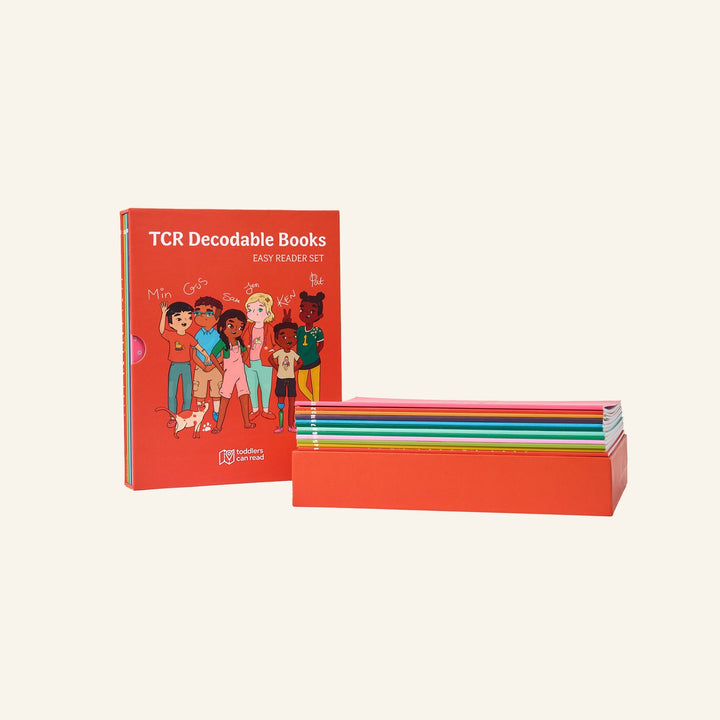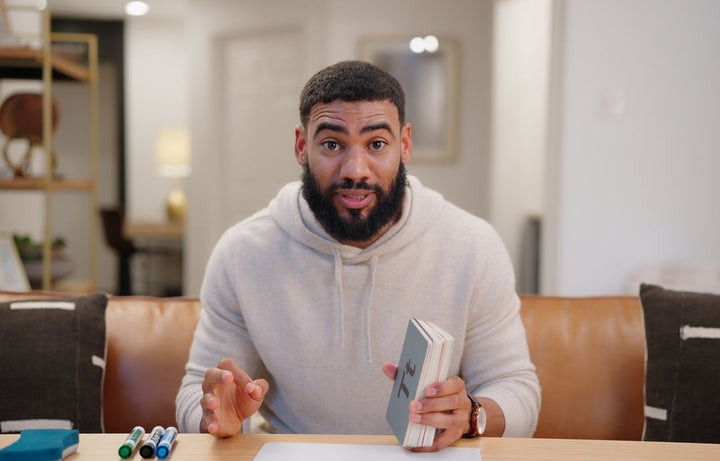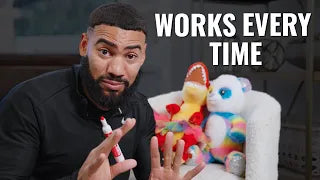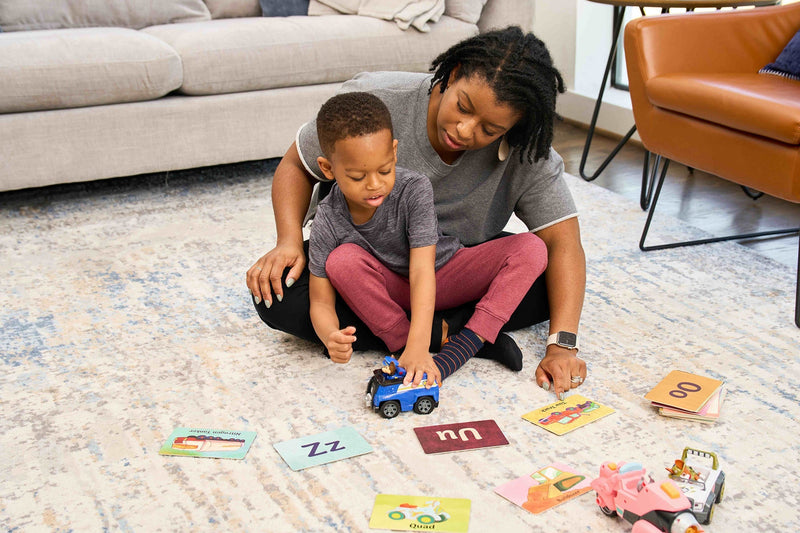A lot of folks want to teach their children how to read, but are worried their little one won't be able to focus, sit still, or follow the directions they give them. And I understand how frustrating it can be to create a lesson that is meant to be fun and engaging but that you can't even finish because your child won't listen to you.
I've been in your shoes.
As a first-year teacher, I had 25 kindergarteners who wouldn't do anything I asked them to. I used to go home everyday wondering why none of my students listened to anything I said. It felt like nothing I did or said made any difference in their behavior, and it made me question if they even could follow directions.
But that all changed one day, when I dropped my students off at P.E. class with their teacher, Ms. Williams, and decided to stay. And what I saw blew my mind. I watched every single one of them do exactly what she asked them to. Every time she gave a direction, they followed it immediately. They didn't talk over her or run around like they did with me; it was like watching a completely different group of kids.
At first I thought maybe it was because it was P.E. class, that they were excited to be active instead of working on reading or math. But the more I watched, the more I noticed that it wasn't just when they got to move around that they followed her directions- they listened when she told them to sit quietly and stay calm, too.
I wondered if maybe Ms. Williams was just magic. How else could this class of 25 kindergarteners go from ignoring my directions all day to doing exactly what they were told when they were with her?
But Ms. Williams wasn't magic, she was just a really good teacher. So good that I spent every day- for the rest of the year- observing her teach my students, talking to her about my challenges, and asking her questions to learn what to do. Ms. Williams helped me to master the same tips she used to keep every child focused, engaged, and having fun while learning. And in this blog post, I'm going to help you master them to!
I promise you that anyone can learn how to get their child to follow their directions, no matter how much you've struggled with your child's behavior in the past. Putting the following 8 tips into place is what helped me go from a teacher who was exhausted and struggling to make it through the day, to a teacher who asked for the biggest class with the most challenging behaviors ever year (and enjoyed it!)
So if you're patient with yourself and your little one, following these guidelines will make learning time much easier (and more fun) for both of you.
Tip #1: Sit face-to-face.
Some kids do well sitting side by side while you teach. But if you're reading this post, and you're struggling with your learning time, my guess is that your child isn't one of them. So instead of sitting side-by-side with your child, set up your space so that you are sitting face-to-face. This changes the whole energy of the lesson and will allow them to look at you while you're speaking and focus on what you're asking them to do.
If you have multiple kids...If you have more than one child, I recommend working with them 1-on-1, even if that means you'll have less time with each child. It's really unlikely that both of your children will be working on the exact same skills at the same time (or learning at the same pace), so separating them means it'll be easier to keep their attention. You can read more about why I recommend working with your children individually in my previous blog, Should You Teach Your Kids Together or 1-on-1?
Tip #2: Get close.
Along with sitting face-to-face with your child, being physically close to them will also help them focus. The further away from them you are, the less likely they are to be able to hear what you're saying and to feel your energy as you teach. It might feel intrusive at first, but if done right (see tip #5), it will actually help them feel calmer, safer, and more involved in the lesson.
Tip #3: Make eye contact.*
When I'm working with little ones, I don't give a single direction if they aren't looking at me and paying attention. If a child is making eye contact with me, I know they are focused on my words. And if they're focused on my words, it's a lot more likely that they will understand and follow my directions.
*I know that there are some children who have a hard time making eye contact because it makes them uncomfortable. If that's the case for your little one, you know your child best, and the most important thing is that you have confirmation that they're listening to you before giving them directions.
Tip #4: Make gentle physical contact.
This could be a hand on their shoulder or a simple high-five. Just like tips #2 and #3, gentle touch will help them to feel closer and more involved in the lesson so they can focus on you and what you're saying instead of the 100 other things going on around them.
And just like you shouldn't force eye contact if it makes your child uncomfortable, you don't need to force physical contact either. This is just another thing that helps most kids focus... if it is done with a calm, confident, and respectful energy.
Tip #5: Keep your energy calm and confident.
I'm not saying this will be easy. In fact, this might be the hardest tip on this list. But it's also the most important.
Because if your energy isn't calm and focused, there's no chance your child's energy will be either. Managing behavior is not just a conversation we have before the learning time, it's how we interact with our child and how they feel our energy. If you're feeling frustrated or anxious or uncertain, your child is going to pick up on those emotions and reflect them back to you. Even if you think you're hiding it (you're not).
So before you jump in, take the time you need to make sure your energy is right. Fake it till you make it if you have to. But if your child is demonstrating some of these negative behaviors and attitudes towards learning time, I want you to start by looking inward at yourself before you look outward to them.
Tip #6: Preview the lesson ahead of time.
Tell your child exactly what's going to happen during the lesson. Don't leave anything up to guessing. It might sound something like this:
"Today we are going to work on 3 different letter sounds. When we finish working on the letter sounds, we will take a break and go dance!"
Essentially, you want them to know what it is specifically that they'll be working on and what they'll get from it afterwards. Knowing what to expect helps your child feel like they are part of the learning time and allows them to focus on the lesson.
Tip #7: Use questions, statements, and directions correctly.
OK, I take it back. THIS might be the most important tip in this blog. In fact, it might be the most important tip in any of my blog posts.
Because what we say to our kids is so important and yet almost nobody is aware of when they're asking their child to do something vs. telling their child to do something.s. Here's an example of a question, statement, and direction:
Question: "Do you want to do the learning time?"
Statement: "OK, it's time for our lesson!"
Direction: "Tell me the first sound."
And why is it so important that we give a direction instead of asking a question? Because when we ask a question, we are telling our little one that it doesn't actually matter whether they do it or don't do it. We're letting them decide. And since we left the door open for them to choose their response, we have to respect when they say "no".
Does that mean you shouldn't ask questions? Absolutely not! You should be asking a ton of questions sprinkled throughout the learning time. You can ask them which color marker they want to use, which stuffed toy they want to sit with during the lesson, or what game they want to play with the letter sounds. The difference here is that the answer doesn't matter. Whatever they choose, you're OK with!
But when it comes to things you DO want them to do, you're better off giving them a clear direction so they know exactly what to do.
Using statements with our kids is also important, but just like with questions: statements don't actually tell our little one what to do. If we say "it's time to practice our sounds," that is very different from telling them "Tell me what this first sound says."
Statements are NOT directions, and they do not give children enough information to do what we want them to. For example: Should they be sitting down? Looking at the sound flashcards? Playing with their toy? They won't know until we tell them.
The differences between these three things might seem small, but the clearer you can get with your directions, the easier it will be for your little one to follow them.
And a note from me to you: don't be afraid to give a clear direction at the beginning of your learning time. You might be surprised that your child actually likes knowing what to expect.
Tip #8: BELIEVE your child can do it.
It doesn't matter if you are absolutely perfect at tips #1-7. If you don't believe your child can follow directions, they won't. If you truly believe that their learning difference, or age, or inability to focus, or literally anything else means they can't do it, then they are not going to.
Because no matter what we say or how we act, our little ones can tell when we don't believe in them. They can feel our energy, beliefs, and expectations of them no matter how well we think we're hiding it. Our children are mirrors, and will reflect back whatever we give to them. So before you even attempt to start the learning time, make sure your mindset matches what you're trying to accomplish.
If you're still not sure...
I get it: Behavior can be the trickiest part of teaching your little one how to read.
One final piece of advice: Believe in yourself. If you feel overwhelmed at the thought of getting started with your child, you are not alone. I've worked with thousands of parents, many of whom were nervous about whether or not they could teach their child. But I make content for parents for a reason: I believe you have everything it takes to be a great teacher to your little one. And I hope you can find a way to believe that, too.









